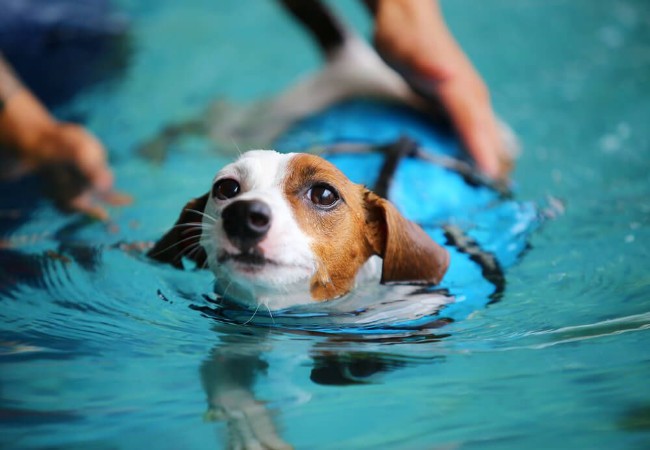Teaching Your Dog to Swim: Vet’s 2025 Safe & Fun Guide for Water‑Loving Pups 🩺🐾

In this article
Teaching Your Dog to Swim: Vet’s 2025 Safe & Fun Guide for Water‑Loving Pups 🩺🐾
By Dr. Duncan Houston BVSc
Hello—I’m Dr Duncan Houston BVSc, veterinarian and Ask A Vet founder. Swimming is a fantastic low‑impact exercise and bonding activity—but not all dogs swim naturally. This vet‑approved guide covers:
- Safe, step‑by‑step introduction to water
- Using a dog life jacket effectively
- Recognizing fatigue and distress
- Pool safety and exit strategies
- When professional swim lessons or hydrotherapy may help
- Ask A Vet tracking for swim progress and safety
1. Start in Shallow Water
- Choose a calmly sloped entry like a beach or pool steps.
- Wade in holding your dog under the belly, letting them paddle their front legs first.
- Use praise, treats, or toys—no force—making each step positive and optional for the dog.
2. Use a Life Jacket for Safety
- All dogs benefit from flotation support, especially beginners, tiny pups, seniors, or short‑legged breeds.
- Introduce the life jacket on dry land first—get your pup used to it before entering water.
- Ensure proper fit and buoyancy to keep the head clear above water and reduce fatigue.
3. Build Confidence Gradually
- Encourage short paddling trips to the nearest steps or shore—reward every swim stroke.
- Never dunk or toss your pup in—allow them to explore voluntarily.
- Keep sessions short, fun, and fatiguing just enough, avoiding panic or exhaustion.
4. Watch for Fatigue & Distress
- Signs of tiring include sinking hindquarters, slow paddling or panting—immediately take a break.
- Dogs may inhale or swallow pool water—monitor for excessive drinking, coughing, or GI upset.
5. Pool Safety & Exit Strategy
- Ensure clear, accessible exit points—pool steps or a ramp your dog recognizes.
- Never leave dogs unsupervised around water—sadly, many drowning or fatigue incidents happen without oversight.
6. Hydrotherapy & Professional Lessons
- Hydrotherapy or swim classes offer structured, buoyed exercise useful for rehab, aging joints, or overweight dogs.
- Ideal for dogs recovering from injuries or needing low-impact fitness.
7. Ask A Vet Swim Tracking Tools
- Log swim sessions: duration, water type, depth, life jacket use
- Track fatigue cues, water intake, panting, and exit delays
- Set swim reminders and safety checks before entering water
- Note progress: voluntary entries, independent swimming to edge
- Attach vet contacts and hydrotherapy referrals for quick access
📌 Final Thoughts from a Vet
Teaching your dog to swim safely and enjoyably is a step‑by‑step journey—starting with shallow water, voice praise, and flotation support. Pool safety and vigilance are key. Swim training helps build confidence, fitness, and trust. For dogs with mobility or recovery needs, hydrotherapy is a valuable tool. Ask A Vet’s tracking helps you monitor swim readiness, safety signals, progress, and supports informed care decisions. 🐾💙






